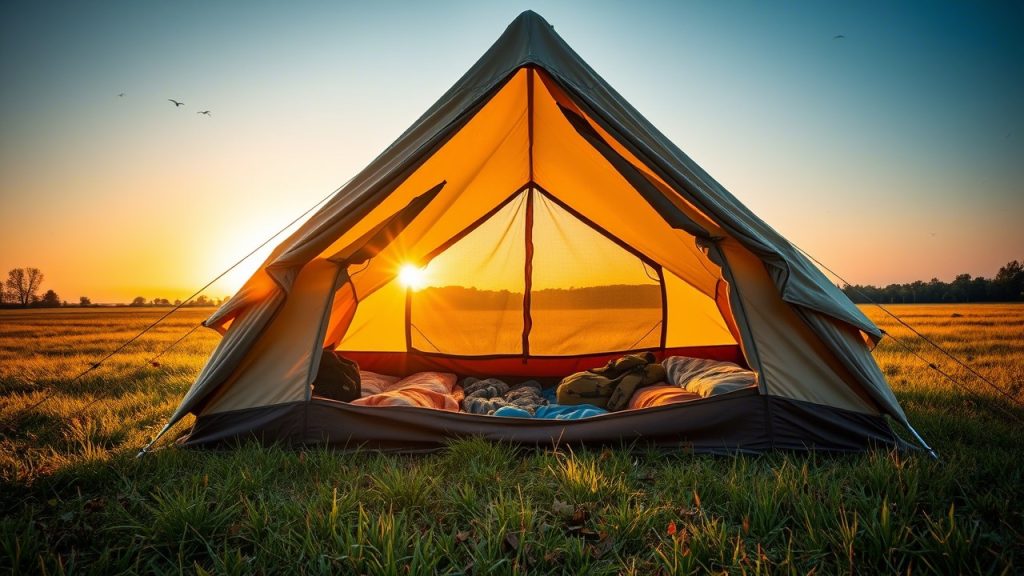There’s nothing worse than waking up in a tent soaked with condensation, gasping for fresh air, or sweating in the middle of the night. If you’ve ever camped in the summer heat, a humid climate, or even on a chilly night when condensation builds up, you know how crucial good tent ventilation is. Without it, your gear gets wet, your sleep is disrupted, and your tent becomes a breeding ground for mold and mildew.
The good news? With the right strategies and gear, you can dramatically improve airflow inside your tent. We’ll explore 10 best tent ideas to improve ventilation overnight, explain why they work, and help you transform your next camping experience into a cool, dry, and comfortable one. Whether you’re a casual weekend camper or a seasoned backpacker, these tips will help you sleep better, stay healthier, and enjoy the outdoors even more.
Why Tent Ventilation Matters
Before diving into the solutions, let’s break down why ventilation is so critical in a tent:
Reduces Condensation: Your body releases moisture when you breathe and sweat. Without ventilation, this moisture condenses on the tent walls and drips down, soaking your gear and sleeping bag.
Controls Temperature: On warm nights, airflow keeps the inside of the tent cool. On cold nights, proper ventilation helps manage humidity levels to avoid dampness.
Improves Air Quality: Good ventilation helps fresh air circulate, reducing stuffiness and keeping you breathing comfortably.
Prevents Mold & Mildew: Trapped moisture can lead to mold growth on the fabric, which damages your tent and can harm your health.
In short, ventilation is not just about comfort — it’s about safety, gear longevity, and overall camping enjoyment.
10 Best Tent Ideas to Improve Ventilation Overnight
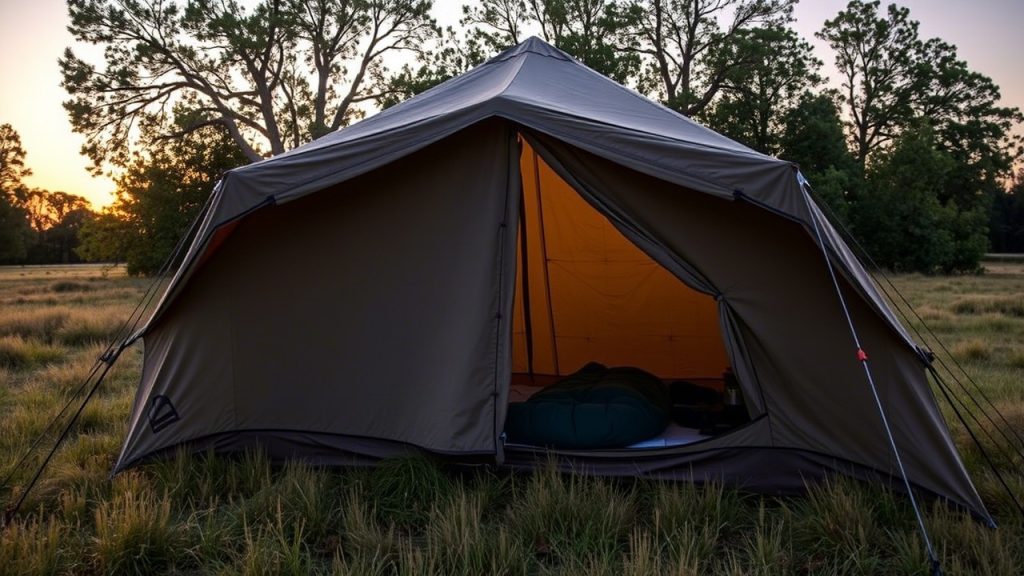
1. Choose a Tent with Mesh Panels
When shopping for a tent, look for models with large mesh panels on the doors, windows, and ceiling. Mesh improves airflow without letting in bugs. Many three-season tents are designed with ventilation in mind, using mesh as a primary material on the inner body.
Mesh tents allow warm, humid air to escape while pulling in fresh, cooler air. The result? Less condensation and a more comfortable sleeping environment.
Bonus Tip: Even in light rain, leave mesh windows slightly open under the rainfly for continuous airflow.
2. Use a Double-Wall Tent with a Rainfly
Double-wall tents have two layers: the inner tent (usually mesh) and a separate rainfly that provides weather protection. This design creates an air gap between the two layers, which helps with ventilation and reduces condensation buildup.
Unlike single-wall tents, which trap moisture, double-wall tents let the inner layer breathe while the rainfly keeps rain and wind out.
Pro Tip: Set up the rainfly so it doesn’t touch the inner tent and leave the vestibule doors slightly open to create cross-ventilation.
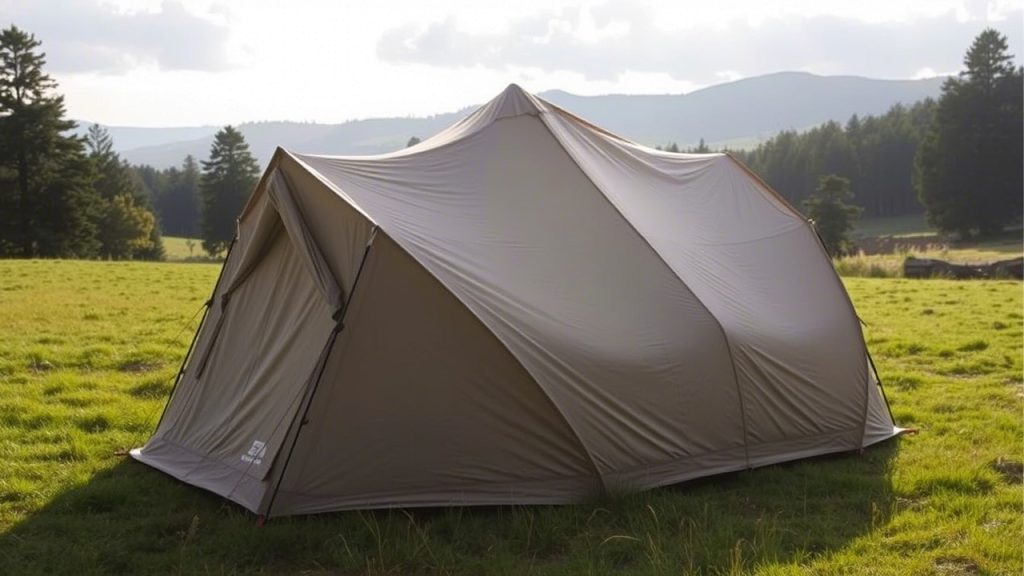
3. Set Up in the Right Location
Where you pitch your tent matters. To improve ventilation:
Choose high, breezy spots rather than low valleys where cool air and moisture settle. Avoid camping under dense tree cover, which blocks airflow. Position the tent so doors and windows face the prevailing wind.
By letting nature help you ventilate, you reduce the need for extra gear or effort.
4. Stake Out and Tension the Rainfly Properly
Many campers set up their rainfly too tight or too loose, restricting airflow. For best ventilation:
Leave a small gap between the ground and the bottom of the rainfly. Use guylines to pull the rainfly away from the tent body, creating airflow channels. Tighten or adjust the rainfly as weather conditions change.
A well-pitched rainfly acts like a chimney — pulling moist air up and out.
5. Keep Tent Doors and Vents Open
It might sound obvious, but many campers zip everything shut at night out of habit or fear of bugs. If weather and conditions allow, keep the doors, windows, or vents open to allow air to move freely through the tent.
If you’re worried about insects, make sure the inner mesh doors are zipped while keeping the solid outer doors or vestibules open.
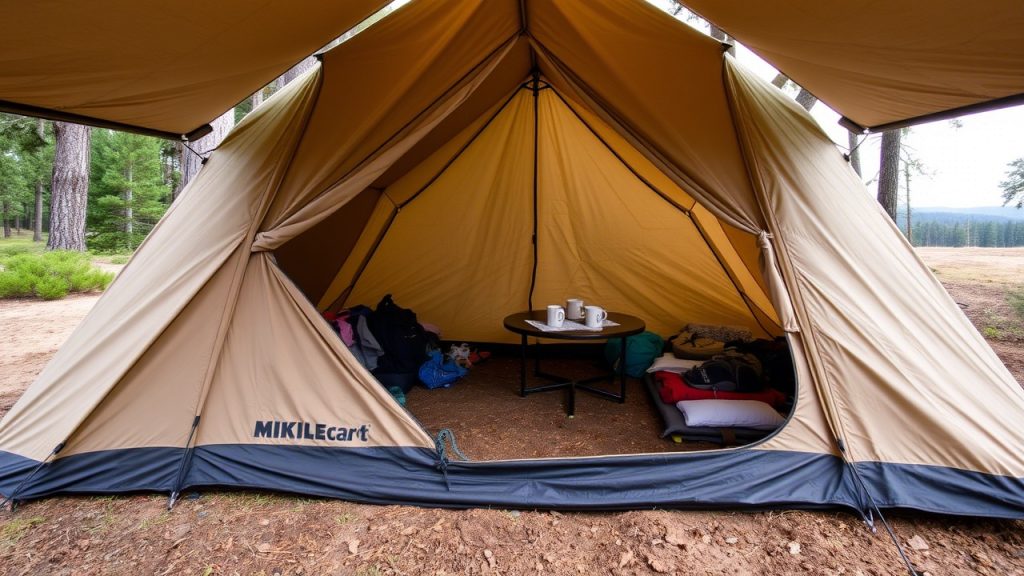
6. Use a Tent with Roof or Ground Vents
Modern tents often include roof vents or ground vents specifically designed for airflow. Roof vents allow warm air to escape, while ground vents pull in cool air from below.
If your tent has these features, use them! Many campers forget to open or adjust vents, missing out on one of the simplest ventilation tools available.
Quick Tip: Check the vents during setup and before bed — they sometimes collapse or close on their own if not properly tensioned.
7. Elevate Your Sleeping Gear
Even though this may sound minor, elevating your sleeping pad or cot off the tent floor allows air to circulate underneath you. This reduces body heat buildup and helps push warm, moist air up toward the vents.
Cots work especially well because they allow airflow from below, but even using a thicker sleeping pad with ventilation channels can help.
8. Use a Small, Portable Tent Fan
For hot, humid nights when natural airflow isn’t enough, a battery-powered or rechargeable tent fan can make a huge difference. Tent fans improve airflow, speed up moisture evaporation, and help regulate temperature.
Look for fans with clip or hanging attachments, adjustable speeds, and long battery life or USB charging.
Position the fan near a vent or door to help pull in fresh air or push out warm air.
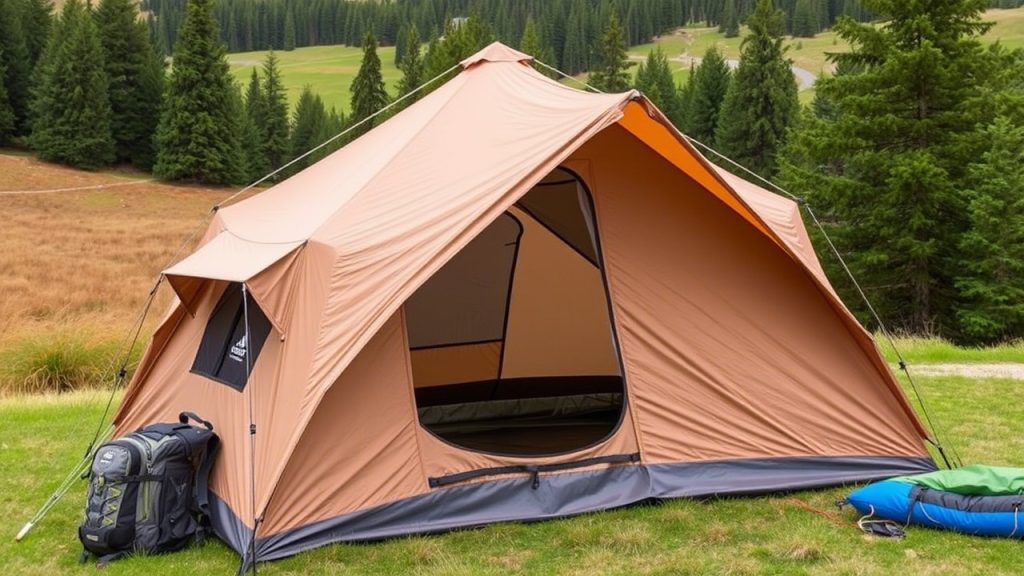
9. Dry Out Wet Gear Before Bringing It Inside
Bringing wet clothes, shoes, or gear into your tent adds unnecessary moisture and contributes to condensation. To improve overnight ventilation:
Hang wet items outside under a tarp or rainfly. Use a vestibule or gear loft to keep damp items separate. Shake off dew or rain from backpacks and jackets before entering.
This reduces the overall moisture load inside the tent, making your ventilation efforts much more effective.
10. Leave the Rainfly Off in Clear Weather
On clear, dry nights, you may not need the rainfly at all. Sleeping without it dramatically increases airflow and gives you a direct line of sight to the stars.
This works especially well in arid or alpine environments where rain is unlikely. Just make sure your tent has enough mesh coverage to keep bugs out.
Bonus Tips for Better Overnight Ventilation
Use light-colored tents to reflect heat rather than absorb it. Set up camp early to allow the tent to dry out before sleeping. Shake out and air out your tent in the morning to prevent long-term moisture buildup.
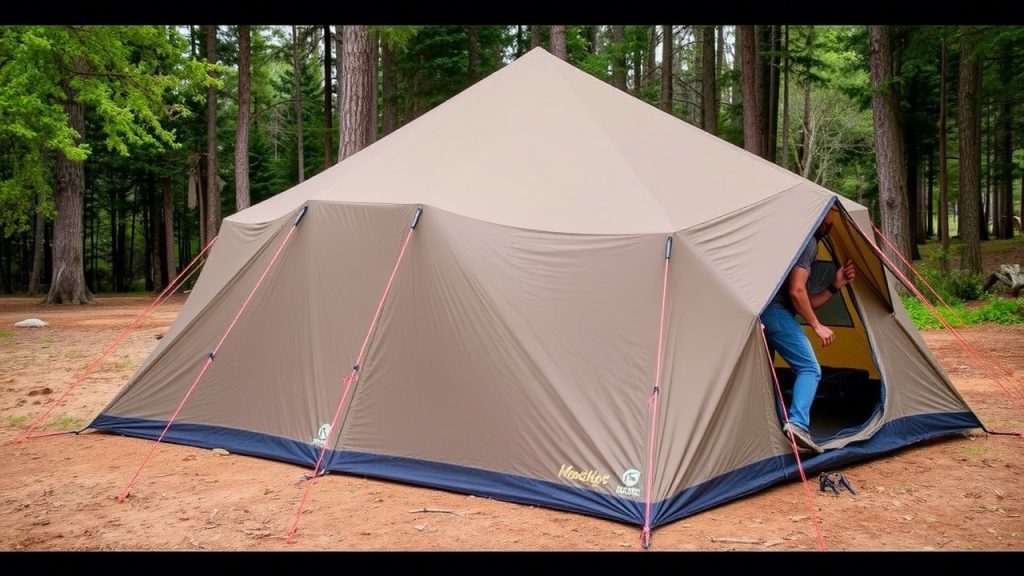
Common Mistakes That Reduce Tent Ventilation
Overpacking the tent with people and gear. Blocking vents with sleeping bags or backpacks. Setting up in deep valleys or wooded areas with poor airflow. Forgetting to open vents or doors at night. Ignoring weather conditions and not adjusting the rainfly.
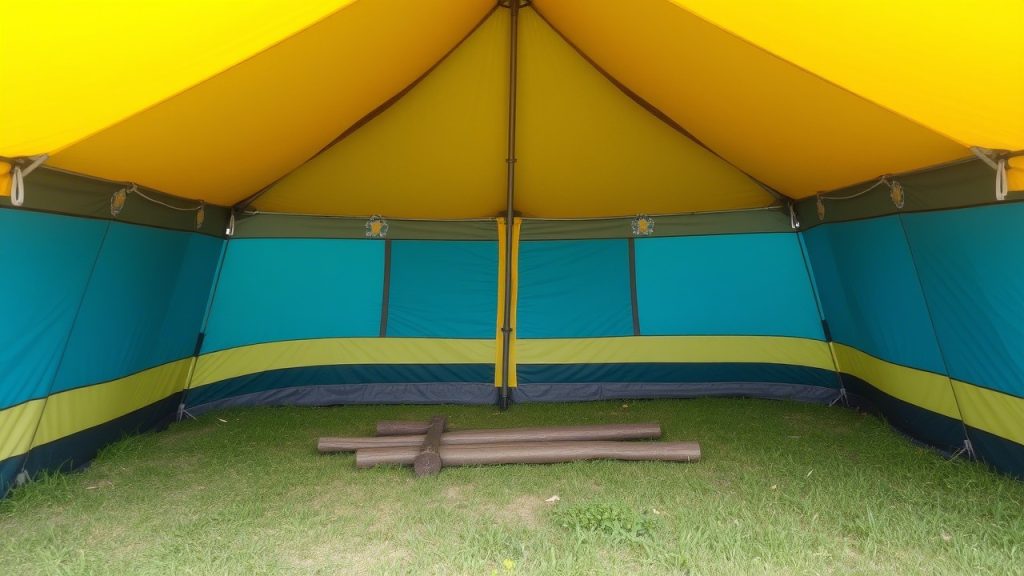
Summary – Key Takeaways
Improving ventilation in your tent overnight isn’t complicated, but it does require attention to detail. By choosing the right tent, setting up properly, and managing your gear wisely, you can stay cool, dry, and comfortable on every camping trip.
Here’s a quick recap:
Choose a tent with mesh and vents. Set up in a breezy, elevated location. Use the rainfly wisely. Keep doors and vents open when possible. Elevate your sleeping gear. Consider a portable fan. Keep wet gear outside. Skip the rainfly when conditions allow.
With these strategies, you’ll sleep better, avoid condensation, and wake up ready for adventure.
11 Frequently Asked Questions
- Why does my tent get so wet inside overnight?
Moisture from breathing, sweating, and wet gear builds up and condenses on cool tent walls if ventilation is poor. - What is the best tent shape for ventilation?
Dome tents and tunnel tents with multiple vents and mesh panels generally provide better airflow than single-wall or wedge tents. - Do rainflies always reduce ventilation?
Not necessarily. A properly pitched rainfly creates an air gap and can actually improve ventilation by funneling air through the tent. - Should I leave my tent door open overnight?
If the weather is dry and you have a mesh door for bug protection, leaving it open greatly improves ventilation. - How do I prevent condensation when camping in winter?
Use a well-ventilated four-season tent, keep vents open, and avoid bringing wet gear inside. - Can I use a fan in a tent safely?
Yes, as long as you use a battery-powered or USB fan designed for camping. Avoid large, plug-in fans that generate heat or draw too much power. - Do larger tents have better ventilation?
Not always. A well-designed small tent with proper vents can ventilate better than a large, poorly designed tent. - Will a footprint or groundsheet help with ventilation?
A footprint protects the tent floor but doesn’t directly improve ventilation. However, it can help keep moisture from seeping upward. - How often should I air out my tent?
Air out your tent every morning to dry moisture and after each trip before storing it. - Is it okay to sleep without a rainfly?
Yes, in clear weather, it’s perfectly fine — and it can dramatically improve airflow. - Can I improve ventilation in an old tent?
Yes! You can add aftermarket vents, use a tent fan, or modify your setup with tarps or poles to create more airflow.
Conclusion
Ventilation is one of the most overlooked yet critical aspects of a great camping experience. Whether you’re battling summer heat, managing winter condensation, or simply wanting to breathe easier through the night, improving your tent’s airflow can make a world of difference.
By applying the 10 best tent ideas to improve ventilation overnight — from choosing the right tent design, positioning it wisely, managing your rainfly, using mesh panels, to incorporating small gear like fans — you can dramatically enhance your comfort, protect your gear, and sleep soundly under the stars.
Remember, no single solution works for every situation. It’s about combining strategies based on weather, terrain, and your tent’s design. With a bit of preparation and mindfulness, you’ll transform your tent into a cool, dry, and breathable shelter that supports all your outdoor adventures.
Happy camping — and may your nights be breezy, fresh, and condensation-free!

